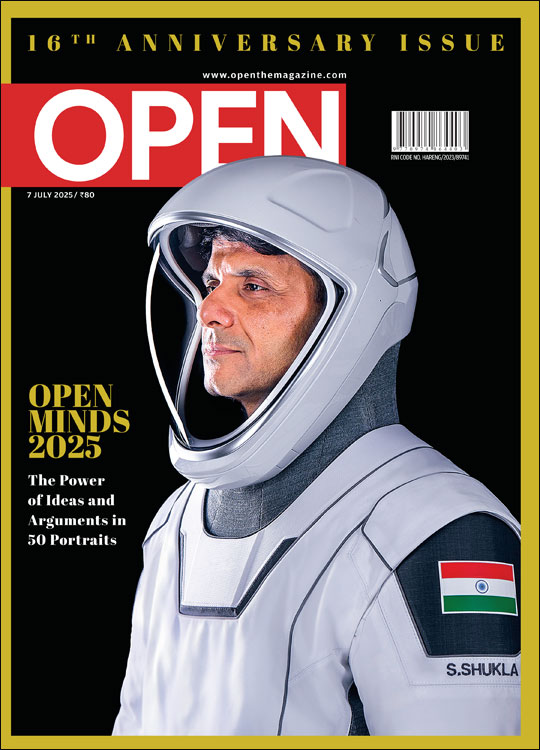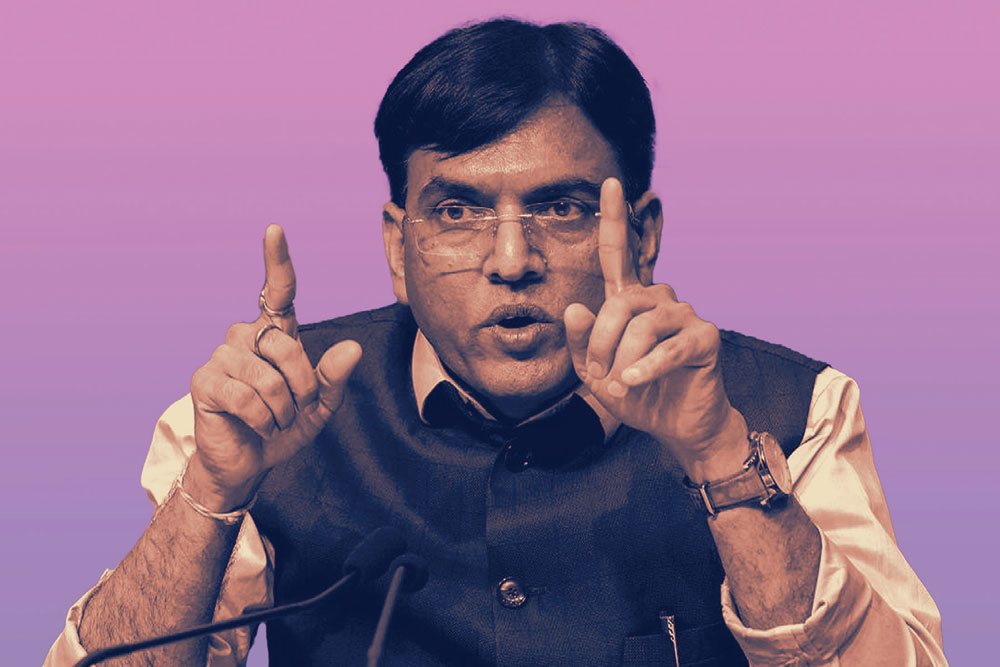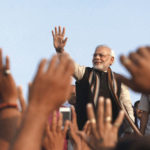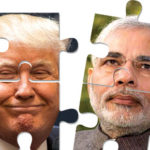Normalising Netaji
We need to redeem Bose from fairytales —and bring his remains home
 Sumantra Bose
Sumantra Bose
 Sumantra Bose
|
11 Feb, 2016
Sumantra Bose
|
11 Feb, 2016
/wp-content/uploads/2016/02/20806.netako1.jpg)
I have never written anything on or about Netaji Subhas Chandra Bose, my grand-uncle. The reason is twofold. First, I have plenty of other interests and pursuits that keep me happily occupied. Second, I do not believe that being a ‘family member’ automatically entitles, or obligates, me to comment on him. In any case, born a quarter-century after Netaji’s martyrdom in 1945, I do not really regard him as a family member per se, but rather as a national leader and historical figure. I have an aversion to being tagged as ‘Netaji’s descendant’. I react to such labelling, almost always by well- meaning people unaware of my aversion, with weariness bordering on irritation—‘Oh no, not again, will I never escape this?’—and give curt, monosyllabic replies to excited questions. And I stay strictly aloof from public discussions and debates about him, including the national media scrum that has been ongoing since last year and, unusually for an Indian news story, drawing some attention in the international media too.
This does not mean that I am indifferent to Netaji’s significance to the making of contemporary India, or to the very special place he holds in Indian hearts. Far from it. In recent months, I have edited and arranged for the publication of the most authentic and illuminating account of Netaji and the Bose family during India’s freedom struggle. Titled Subhas and Sarat: An Intimate Memoir of India’s Bose Brothers, it was written by my late father, Dr Sisir Kumar Bose, prior to his death 15 years ago, based on a bestselling Bengali version he wrote in the 1980s. It narrates the dramatic struggles in the cause of India’s freedom of Subhas and his elder brother Sarat Chandra Bose (my grandfather), the eminent barrister and political leader who was Netaji’s lifelong confidant and most resolute supporter and with whom Netaji had a unique bond and partnership.
It is riveting stuff, first-hand history at its best, told by an author who was not just a close observer but an active participant. Born in 1920, Sisir grew up with his uncle—Netaji lived with Sarat Bose and his family until 1937, when not in prison or in forced exile in Europe. In the winter of 1940-1941, Sisir’s life was transformed when his uncle asked him to help organise and execute his famous escape from India so he could take advantage of World War II to launch a movement for India’s liberation from abroad. Sisir duly helped his uncle to plot the escape and, in the dead of night in January 1941, drove him secretly from Calcutta to the Gomoh railhead in Bihar (now in Jharkhand), from where Netaji travelled in disguise to Peshawar and eventually to Berlin via Kabul and the Soviet Union. Sisir paid the price for his role in the escape and later, his work with the revolutionary underground in Bengal in support of the Indian National Army. He was first arrested in autumn 1942 and lodged in Calcutta’s Presidency Jail, where he almost died of typhoid fever. Home-interned during 1943, he was re-arrested in 1944 and held consecutively in the dungeons of the Red Fort, in solitary confinement in the Lahore Fort, and the Lyallpur (Faisalabad) prison, from where he was released in September 1945. The book will be published shortly—probably April— by Aleph Book Company.
My father too disliked being described as ‘Netaji’s nephew’. The reason is there in the final passages of the book: ‘Subhas and Sarat were sons of the Bose family only nominally. They were really sons of Mother India. All of India’s people, hundreds of millions of men, women and children, were as much their kith and kin as we’. As for the 1941 escape, in which he served as his uncle’s chief assistant, he says: ‘I think that in the decisive final phase of Uncle Subhas’s life that began in November 1940, the familial relationship between an uncle and a nephew became irrelevant. A new relationship based on revolutionary purpose took its place’.
It is difficult to evaluate and situate Netaji in a normal perspective. For 70 years, he has been an iconic figure, a hero without compare, a folk legend in a very long and established Indian tradition. For the first four decades after Independence, he was largely ignored and marginalised in the official, state-sponsored narrative of India’s freedom struggle. This did not diminish him in public perception, let alone erase him from the national memory. In retrospect, it is clear that the official suppression of Bose’s role and contributions spectacularly backfired. The more he was brushed out of the official narrative, the more his stature—and myth—grew in the popular imagination.
Bose is unique among our pantheon of national leaders in the spontaneous reverence that he evokes among the Indian people. It is a deeply emotional phenomenon. A senior INA officer who had the opportunity after Independence to work with and observe other national leaders, Nehru included, once said that while he respected these other men, he loved only one: Netaji. I remember that INA veterans like Gurbaksh Singh Dhillon—the commander of the INA’s Nehru Brigade in heroic battles in Burma in early 1945, and one of the trio tried at the Red Fort in the winter of 1945-1946 alongside Shah Nawaz Khan and Prem Kumar Sahgal—and Lakshmi Sahgal (as Lakshmi Swaminathan, the commander of the INA’s Rani Jhansi Regiment) would break down whenever they spoke of him. It was no ordinary love, but a life-defining love for these men and women. A similar spirit of heartfelt, profound reverence of the leader who did not return has percolated down the generations in post-independence India. This is not just understandable, it is a thoroughly honourable sentiment.
Putting a person on a pedestal of worship, however, has its share of limitations, and even dangers. One risk is that much hero-worship is basically empty, and detracts from serious understanding of the life, personality and actions of the demi- god. My father realised this quite early. That is why, in 1957, he established the Netaji Research Bureau at Netaji Bhawan—the former Bose family residence in Calcutta from where the 1941 escape took place—to meticulously document Netaji’s life in all its complexity. He spent the next four decades relentlessly pursuing this endeavour, despite a busy career as a paediatrician (and occasional politician).
An associated risk of deification, of which Netaji has been a victim, has been the constant proliferation of fantastic stories about him. These mostly relate, but are not limited to, his non- existent afterlife post-1945. As Sisir Bose writes in his book, ‘a myth [grew] about the man that bore little if any relation to the reality. For decades after Independence, spurious rumours kept popping up about Uncle Subhas being spotted in the guise of various godmen…One upshot of Uncle Subhas’s derring-do and remarkable adventures was that he, a realist leader and committed revolutionary, became the subject of numerous fairy-tales’.
The fairy-tale problem started in Netaji’s lifetime. Consider the stories doing the rounds just after it became known in late January of 1941 that Bose had disappeared from the family house in Calcutta. Sisir recalls several such stories in his book, which describes the actual escape and its aftermath in riveting detail. One rumour had it that ‘one evening two Sikh gentlemen came to see Uncle Subhas, and later three turbaned men left the Elgin Road house’. Another went as follows: ‘Late one night, a tall and handsome man appeared on the bank of the Ganga and asked a boatman to take him to the middle of the river. The boatman was offered a fat tip and agreed. As the boat reached mid-river, a rumbling noise was heard and a submarine surfaced. The tall man handed the boatman his tip and jumped on to the submarine. The machine made more loud noises and then disappeared under the water’. In fact, Bose did get on a submarine, but two years later, in February 1943, to travel over three months from Europe to East Asia.
On Sunday, 26 January 1941, when Bose’s disappearance (the escape had happened ten days earlier) was revealed as part of a meticulous pre-arranged plan, relatives and family friends offered numerous suggestions about locating him. In response to one suggestion, a poker-faced Sarat Bose—fully in the know about the escape—asked Sisir to visit the Keoratala crematorium in Calcutta and the nearby Kali temple, in case the missing man had decided to go there. At the crematorium, Sisir writes, ‘all we found were several odd-looking persons in a catatonic state, evidently from smoking pot’. A priest at the Kali temple then told Sisir with great authority that his uncle had renounced the worldly life and taken refuge in a shrine. In fact, Bose was just then about to travel from Peshawar into the north- western tribal territories en route to Kabul. The fantasies continued after Independence—in the 1960s, my father overheard an elderly lady visiting the museum at Netaji Bhawan solemnly tell her grandchild that “Netaji transformed himself into a bodyless being, passed through his bedroom’s windows fitted with iron bars, and descended weightlessly on the road to escape”.
There is a very strong case for rescuing Netaji from the realm of the supernatural. There is much in his real life that school and college students in today’s India should study, debate, write essays about. For example: What do you think about Bose’s approach to foreign policy, based on cold pragmatism, which led him to seek alliances with the Axis powers? What made the INA under his leadership such a harmonious pan-Indian community that united Tamils and Punjabis, and Hindus with Muslims, Sikhs and Christians? What was Bose’s vision of women’s rights and equality? Why did he opt for armed struggle to liberate India and was he right to do so? (It merits mention that Bose never saw the path of armed struggle as a substitute for mass mobilisation but as complementary to the latter.)
The list of questions relevant to contemporary India and the education of its young people can go on. Doubts, sceptical arguments and (informed) criticism are fine. As Sisir Bose writes in his memoir: ‘For quite some time and on many occasions, I had doubts about Uncle Subhas’s political beliefs and prescriptions…after much introspection and analysis, the doubts disappeared.’ Netaji’s only child, my aunt Anita Bose- Pfaff, said in a recent interview that had her father lived and she had grown up with him, it is likely that she would have agreed with him on some things and disagreed on others.
There is one other task outstanding that is essential to normalising Netaji legacy. For 70 years, Netaji’s mortal remains have been lying in the Renkoji temple in Japan, preserved there with great care and respect by the shrine’s authorities. There is persuasive, indeed overwhelming evidence from survivor and witness testimonies that Netaji died on the evening of 18 August 1945 of severe burn injuries sustained in an airplane crash at the Taihoku airfield earlier that day. After his cremation, the remains were transported to Japan. There is not a shred of evidence to support any of the other theories and claims regarding his fate. My father, Sisir Bose, was convinced of the veracity of the air crash after visiting Japan and Taiwan in 1965 and conducting meticulous enquiries. A special investigation team consisting of Sherlock Holmes, Hercule Poirot and Bengal’s Feluda and Byomkesh would not be able to crack the ‘mystery’ of Netaji’s ‘disappearance’ in 1945, because there is no mystery.
As prime ministers, Nehru, Indira Gandhi and AB Vajpayee all visited the Renkoji shrine to pay homage to Netaji during official visits to Japan. Vajpayee, in fact, has visited the temple twice—first as External Affairs Minister in the late 1970s and then as Prime Minister in the early 2000s. In 1995, another Prime Minister, PV Narasimha Rao, initiated moves to bring the remains to India in time for Netaji’s birth centenary (1996-1997).
In August 2014, my mother Krishna Bose—a former three- term Lok Sabha MP and a former chairperson of the parliamentary standing committee on external affairs—wrote to the current Prime Minister, in her capacity of chairperson of the Netaji Research Bureau, on the eve of his official visit to Japan. In the letter, she urged Narendra Modi to visit the Renkoji shrine to pay his respects, and pointed out that all previous prime ministers— barring one, Manmohan Singh—had done so during official visits to Japan (when he was Prime Minister, Singh also failed to respond to my aunt Anita’s communications regarding the matter of the remains). She further noted in the letter that Modi’s counterpart and friend, Prime Minister Shinzo Abe, holds Netaji in very high esteem and regards his association with Japan as an important reference point for the Japan-India relationship of the early 21st century. In 2007, during his first stint as prime minister, Abe made time during an official visit to India to come down to Calcutta—which is rarely on the itinerary of high-level dignitaries— specifically to visit Netaji Bhawan and pay homage to Netaji’s memory. Regrettably, Modi disregarded my mother’s request and chose to emulate Manmohan Singh rather than Indira and Vajpayee.
No nation with self-respect should let the remains of one of its greatest heroes stay indefinitely in a foreign country. This is abnormal, to say the least. My father wanted the remains to be brought back to India with due honour and, ideally, installed in a mausoleum at the Red Fort, the destination of the ‘Chalo Dilli’ campaign. His wish was shared by the vast majority of leading INA officers, Netaji’s true ‘family’ as his comrades in struggle. Netaji’s only child, his daughter Anita, shares this view.
There are precedents of the remains of other martyrs being brought back to India after decades. The remains of Madan Lal Dhingra and Udham Singh were ceremonially brought back to India in the mid-1970s—both had been executed, in 1909 and 1940 respectively, in London’s Pentonville prison and buried in the prison graveyard. As the first among equals in the storied column of martyrs who fell in India’s struggle for freedom, Subhas Chandra Bose’s final resting place should be his own country. I do not know if this will happen in my mother’s lifetime (she recently turned 85) or my aunt’s (she is 73). I hope it does.
(Sumantra Bose is the grand-nephew of Subhas Chandra Bose)

/wp-content/uploads/2025/06/Cover-OpenMinds2025.jpg)











More Columns
'Gaza: Doctors Under Attack' lifts the veil on crimes against humanity Ullekh NP
Armed with ILO data, India will seek inclusion of social security in FTAs Rajeev Deshpande
Elon Musk Returns to Rebellion Mode Against Trump Open